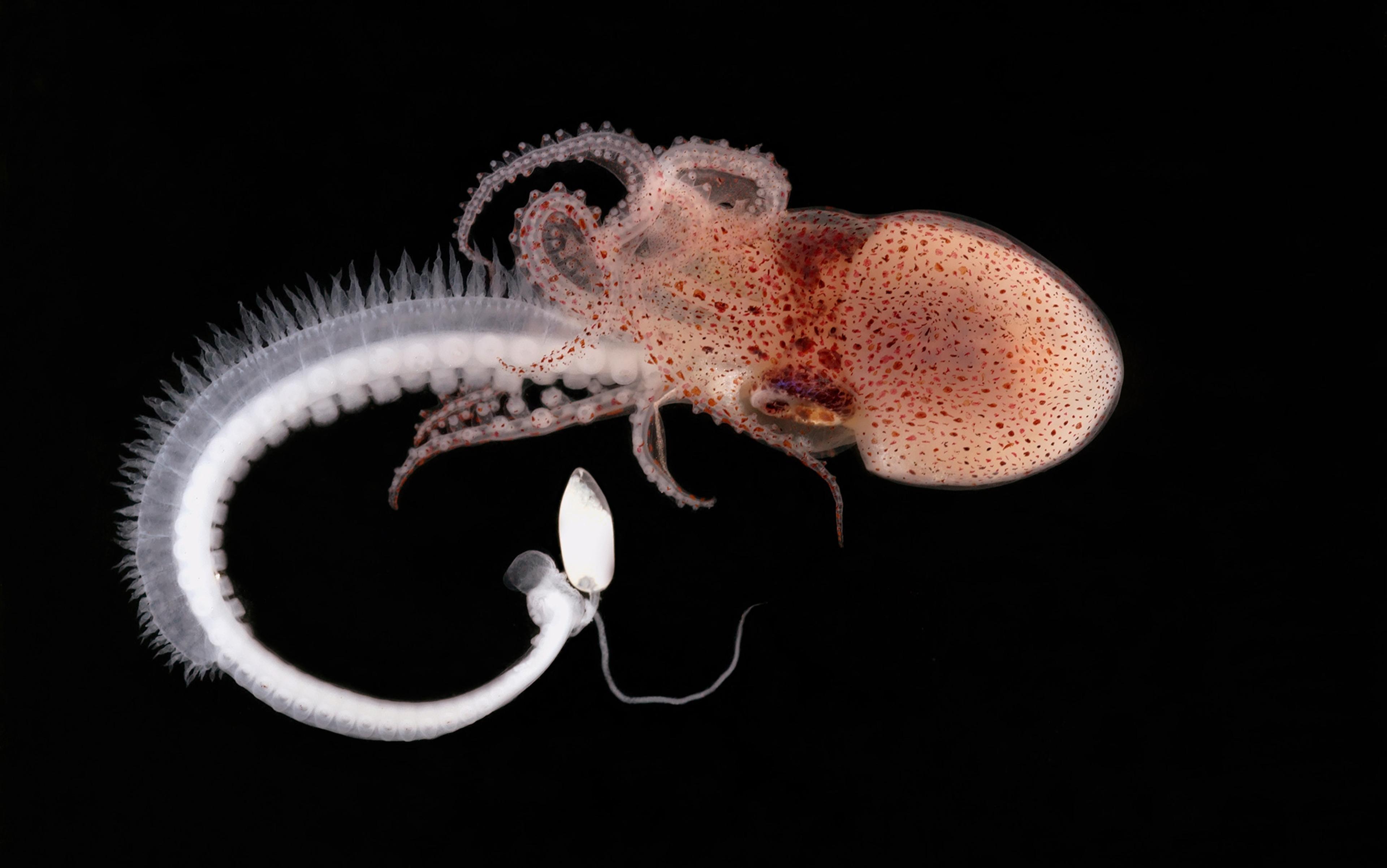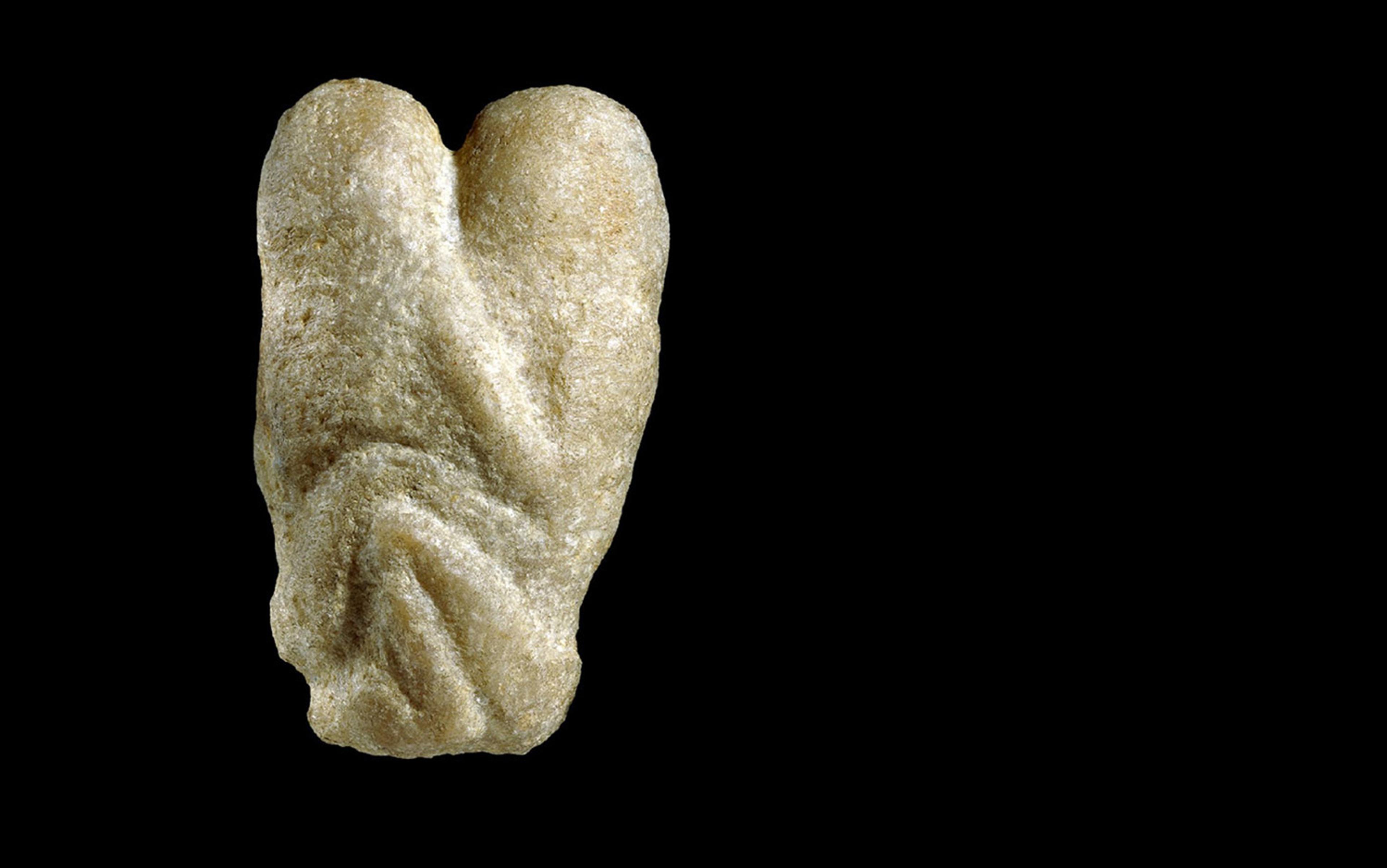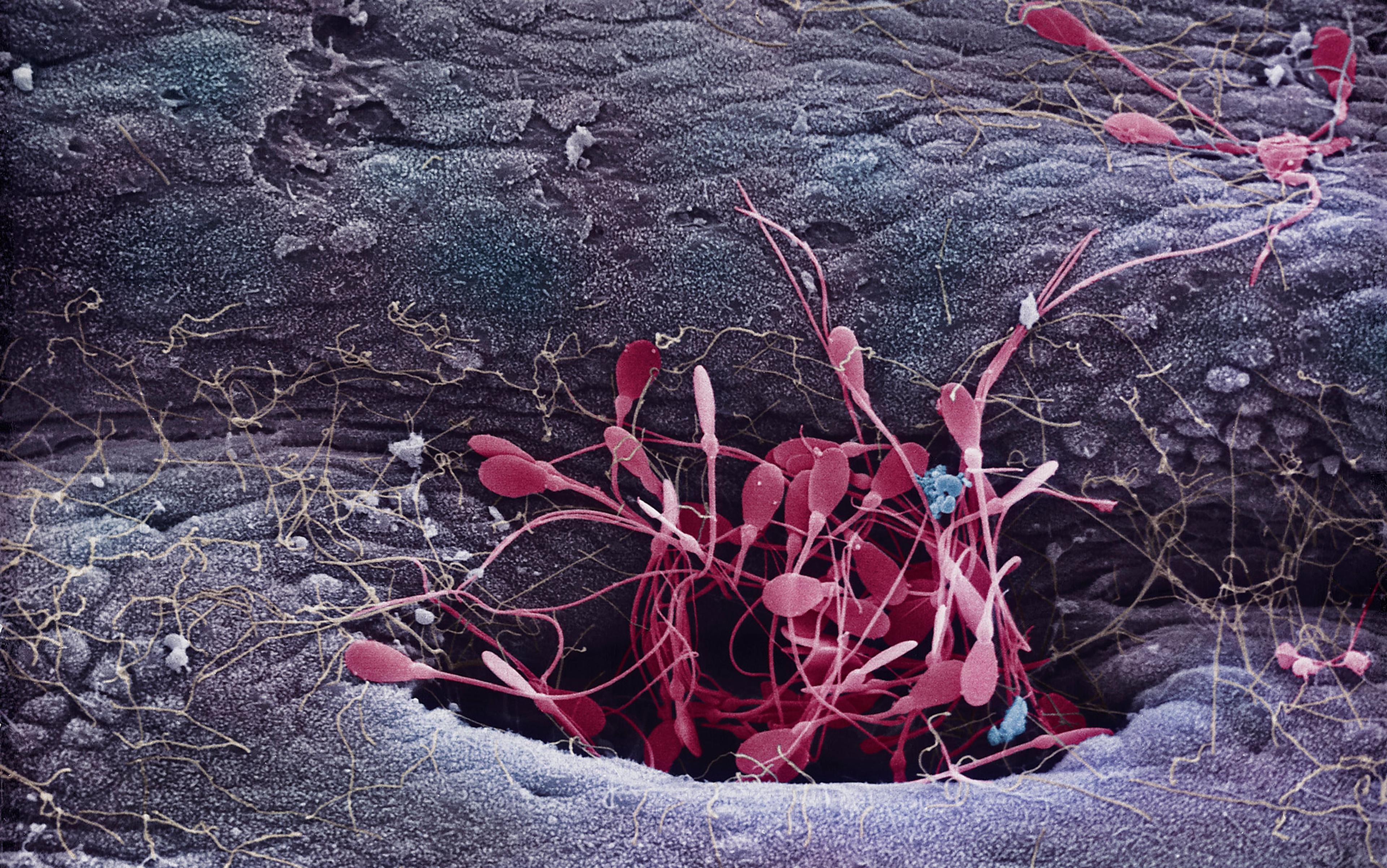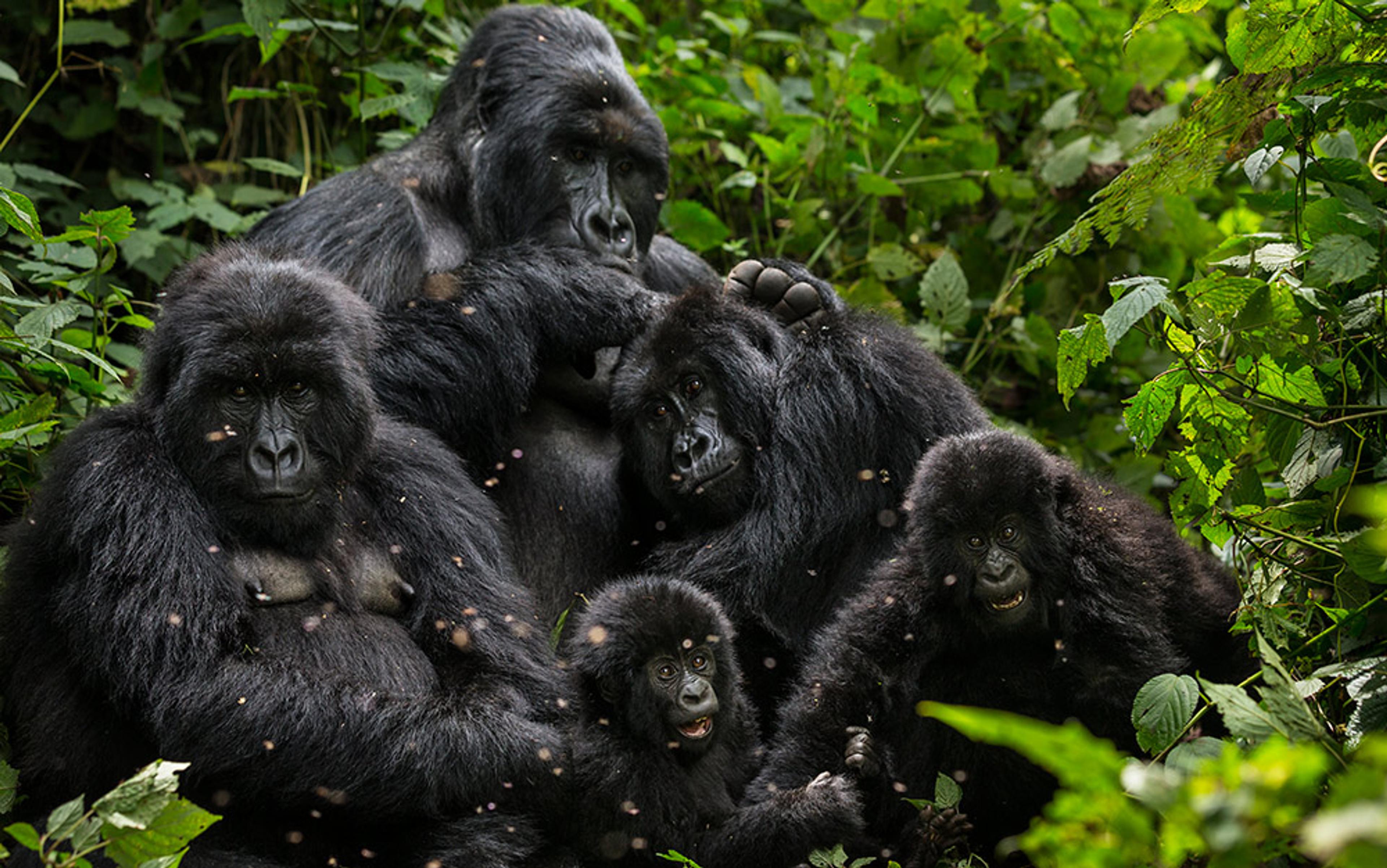Every year, thanks to perfectly timed cues of temperature, chemical signals and the phase of the Moon, corals mate, shamelessly, in the ocean. Their spawning events are spectacular annual shows that attract human gawkers, scientific voyeurs in snorkel gear hoping to catch corals in the act. When the cues align for males and females, entire reefs explode in a colourful blizzard of eggs and sperm. The water brings the sperm and eggs together so that they can fuse to make baby corals. Meanwhile, the parent corals don’t even have to move.
But without water or an egg cache waiting for a light sperm rain, animals, especially land animals, need some other way to bring the sperm and egg together. Enter the penis. It’s part of a delivery system that brings the gametes – sperm and egg – together in water or on land under much more controlled conditions than the coral’s relative reproductive free-for-all. This system usually involves a vagina, a body part that is common to humans and a huge array of other animals. Even sea slugs and insects have vaginas, and it’s often penises that are inserted into them. Sometimes, though, the penis enters elsewhere – including, for some hapless species, the head.
Our earliest hints of a penis in the fossil record trace it to the Palaeozoic, around 425 million years ago, with a little shrimpy-looking animal called Colymbosathon ecplecticos, or ‘amazing swimmer with a large penis’ in the original Greek. Despite its name, this little creature, which clocked in at about half a centimetre, had an equally minuscule penis, from the human perspective. But for its size, the organ was ‘large and stout’, according to the researchers who discovered and described its owner in 2003 in what is today Herefordshire in England. This particular individual met its end in a burst of volcanic ash that mineralised it so quickly that even soft parts such as the penis were preserved for hundreds of millions of years.
You might have noticed that this creature didn’t live on land – but it probably did spend a lot of time scuttling around on the ocean floor, which perhaps provided a backstop for the more targeted transmission of gametes that a penis provides (as opposed to the more scattershot approach of spawning or spermcasting, where gametes are spread to females at large). With a little substrate to brace against, the benefits of choosing a specific mate and making a direct deposit might have been favoured over the more random options.
In the ensuing hundreds of millions of years, nature has had plenty of time to shape an enormous variety of penises, and animals with backbones – vertebrates – are no exception. Vertebrates that ventured onto land eventually evolved eggs packaged in calcium-enclosed sacs, a group known as the amniotes. These animals, including birds, reptiles and mammals like us, feature an array of penile bells and whistles, including spines, penis bones or two heads, sometimes all in the same animal.
Given this variety, one question that burdened the world of genitalia researchers until recently was how many times the penis had evolved in amniotes. The only obvious fact was that its presence was a constant work-in-progress. Birds offer a great example, with only 3 per cent having penises – ducks most famously so, with their ballistically everted corkscrew versions – with the rest using a structure that doesn’t do much of anything, or no penis at all.
In vertebrate species without a penis that still rely on internal transfer of gametes, the solution involves the cloaca, which is Latin for ‘sewer’. This all-purpose structure passes the fluid, including semen, that exits the organism. Animals can use the cloacal kiss, the bringing of the two ‘sewers’ together, to achieve transfer of semen.
Among reptiles, cloacal kisses are not common. In fact, the only reptile that uses a cloacal kiss is the tuatara, the sole representative of an ancient lineage that traces back to the time of the dinosaurs. The absence of a penis from the tuatara, considered to sit at the base of the amniote family tree, implies that some later lineage evolved the appendage. But with the array of apparent differences in penises across amniote species, how many times did the penis evolve anew?
The answers had been all over the place, but rarely was the proposed response ‘once’. The tuatara – or at least, some very old samples of tuatara embryos – resolved it all. In the early 20th century, Arthur Dendy, a zoologist working in New Zealand, sent some eggs collected from local tuatara nests to a US museum. There, the specimens were processed and then lost to time for decades. But a serendipitous recovery of these samples many years later revealed that the embryos were just the right sex at just the right developmental timepoint to see whether these animals initiate a starter penis before dispensing with it, much as human embryos begin making a tail that later disappears.
After researchers digitally rebuilt the tuatara samples, they could see that, at the embryonic region where penises begin, the tuatara embryo did start to develop a penis. As living tuatara born around the time that these eggs were collected demonstrate – they can live for up to a century – the starter penis ends up being a nonstarter.
With this evidence from the tuatara, researchers had the proof they needed that a penis – whether it survived the embryo stage or not – sat at the base of the amniote family tree. The programme for making a penis had evolved only once for our kind. The process for building one was present in the tuatara, with the same timing as in other amniotes, using the same starting materials as ours.
Clearly, we’re not alone. Although the penile variety among amniotes is remarkable, when you wander into the wonderful world of invertebrate forms, you’d think you’ve stumbled into a bizarre funhouse of genitalia.
The fossil record notwithstanding, just how far back a ‘true penis’ (people who research genitalia can get extremely particular about such things) traces isn’t clear. One embryologist, Colin Russell Austin (1914-2004), traced the earliest true penis to Platyhelminthes, or the flatworms. In his framing, these animals were the least structurally complex to sport this ‘widely exploited copulatory device’. They also have another widely exploited but less well-researched copulatory device called the vagina. Many invertebrates have both but will use hypodermic-like penises to inject gametes wherever on the body they can successfully insert them, including right between the eyes.
Although most spiders don’t have penises, true or otherwise, one spiderlike arachnid called a harvestman became famous, 99 million years after its death, for having the world’s oldest known erection. This animal, of a new species dubbed Halitherses grimaldii, turned up in a hardened dollop of the sap that had taken its life, mid-arousal, somewhere in what is today Hukawng Valley in Myanmar. Just as it summoned the fluid to get its tiny, 1.5 mm member erect, the fluid sap ended its hopes. The amber record offered no hints about the alluring potential partner that initially drew its interest.
Jörg Wunderlich, the arachnophile who discovered this particular erection, sequestered in the amber depths of a sample he examined in 2015, also found another interesting specimen: a tiny ancient spider, Burmadictyna excavata, bearing a premade breakpoint on the structure that it used to transfer gametes, for easy snapping off. Spiders usually don’t have penises and instead transfer gametes from the tip of structures at the front of their bodies called pedipalps. This tip, which looks like a little boxing glove, is called an embolus.
Penises have taken on contours that get them around, or through, or over, or under the obstacles they encounter
In this particular 100-million-year-old amber sample, the embolus hadn’t yet been broken off at a narrowing, suggesting that the 2.8 mm animal, like the harvestman, had been trapped in sap pre-flagrante delicto. Such ready-made weak spots on gamete-transfer equipment are not unique to this species. They likely aid animals in escaping from partners that might be as inclined to eat them as to mate with them.
Invertebrates can use a wide array of tools to get the job done. Some insects have a penis, called the aedeagus, that arises from rigid plates on their abdomens, often into hypodermic structures that allow for a quick, breaching injection into the mating partner. Some octopuses use an arm to transfer sperm, with at least one species just transferring the entire arm to avoid becoming dinner for their much larger mate. The sea slug Chromodoris reticulata, which makes both sperm and eggs, has a breakable backup penis. When it copulates, it leaves its penis behind in its partner and provisions itself with a replacement within a day or so. The sea slug manages this by having a spiralled, internally stored penis that can be snapped off in thirds, one-third per copulation.
Insects can sport an impressive array of spikes, barbs, hooks and other accoutrements that look daunting to the human eye. These features also can cause real damage. One otherwise modest-looking seed beetle (Callosobruchus subinnotatus), for example, has a penis with jawlike structures that leave little V-shaped wounds on the partner’s genital tract. As the entomologist Hojun Song noted about these bells and whistles, they aren’t accidental – ‘genitalia do not evolve chaotically’ – so the search has long been focused on various explanations for why this much variety arose when a simple tube could do the trick.
Most explanations hold that, where the genitalic handshake takes place, competing interests can lead to competing adaptations. As an example, the animals that make the larger gametes (eggs) and provide resources for gestating young are probably investing a lot more in this reproductive effort than the partner that just makes a sperm deposit. So the cost-benefits of copulation are not the same for the mating pair. In a kind of exchange, penises have taken on contours that get them around, or through, or over, or under whatever obstacles or competition they might encounter. The corollary is that the organs receiving these penises might also show this level of variety, but that side of things has been far less examined.
Speaking of variety, although we’re used to confining our ideas to a binary of two sexes, the animal kingdom has completely different ideas, with an array of sexes and genitalia that don’t neatly fit into ‘sticks out=male, invaginates=female’ categories. For instance, there are cave insects in which the partner that makes the eggs doesn’t receive sperm via a tube inserted by the other partner. Instead, the egg-producing partner does the inserting and transferring. It uses an organ much like a gamete vacuum tube, poking it into the partner’s very vagina-like orifice to draw up the sperm.
In animals like us, with backbones and a history of landlubbing (even if, as among whales, that history is distant), the penis is less adorned and typically less pointy on average. It’s available in a couple of different broad types. One type is a penis always at the ready, as in crocodilians, which pop them out like suddenly inflated airbags. The other must be made ready through transfer of fluid, as in us and a lot of other vertebrates.
Among land vertebrates, the most impressive specimens don’t earn the glory because of their size but because of their ornamentation, and for that, the medal has to go to snakes and lizards. Their penises are split, or bifurcated, and many of them have the appearance of two-headed maces or prickly pear cacti.
Mammals don’t have quite the glamour penises of snakes and lizards, but they do have something most other vertebrates do not: penis bones. Some lizards of the Komodo dragon variety have hints of the bones (one for each head of the penis, or hemipenis), but mammals dominate with the boned boners. Although the outwardly observable parts of the penises of primates (monkeys, apes), rodents (rats, mice), insectivores (shrews), chiropterans (bats) and carnivores (bears, dogs) perhaps don’t look as impressively ornamented as, say, a seed beetle’s, what lies beneath can be.
A penis bone, or baculum, can vary from a slightly curved long bone, almost like a leg bone, to specimens that end in hooks, tridents, claws or forks. No one is quite sure of the adaptive implications of these penis bones: tests of every hypothesis for their existence and persistence have largely yielded mixed results. Are they there to allow for longer copulation? Mixed findings. Does it matter if the species is monogamous or multipartnered? Mixed, too. Other features, such as body size? All mixed. Why there’s a bone remains largely unknown.
What is known is that humans stand out among primates for not having them. These bones seem to have come and gone through a lot of vertebrate lineages but, from ours, they’re currently just… gone.
Perhaps the lack of spines facilitated that cross-species canoodling
Another thing the human penis lacks that our closest relative retains is spines on the penis itself. These spines aren’t of the spiky sort but more like goose pimples or the grippy bumps on a nonslip mat. What selection pressure or lack thereof led to the loss of these in humans is unknown, but we know the how of their disappearance.
We lack a DNA segment that controls production of a protein responsible for the effects of hormones such as testosterone. We make the protein but, without this DNA segment, we don’t make it at the embryonic time period that would ensure production of penile spines. Activity of this DNA sequence at a specific time in some vertebrate embryos means both the growth of penile spines and of whiskers – the sensory kind, not the beard sort – as well. Humans just skip right over both.
Whatever the reason that we lost these features, we weren’t the first humans to do so: this DNA sequence is also absent from our closest extinct relatives, Homo neanderthalensis and the Denisovans. Given that we probably had some, say, genetic exchange with these relatives, perhaps the lack of spines facilitated that cross-species canoodling.
This absence of features on the human penis relative to many other primates suggests less tension between copulation partners in our reproductive history. We don’t have bumps or bones, and our penises are not shaped like a spatula (we’re looking at you, stump-tailed macaque). Coordinately, the human vagina doesn’t have features that communicate a lot of copulatory tension, either. The stump-tailed macaque, on the other hand, has the vagina version of a stalactite hanging from its roof, potentially explaining the spatula-like adaptation of the penis, presumably able to slide under this obstacle.
Many species use the penis for purposes well beyond delivering gametes, and humans are no exception. Ours might not have a lot of fancy decorations, but we’ve leveraged it for important purposes anyway. You’re probably thinking of something naughty but, really, the uses in this case have to do with symbolic protection and assurance of fertility. As humans began settling more consistently in one place to grow and thrive, the penis – or, more specifically, its erect form, the phallus – often came into use as a protector of fields that would prove fertile. In contrast to the comparative prudery of today, the phallus adorned everything from gods to shrines to personal homes and jewellery.
The gods of some ancient peoples even combined features of agricultural and penile prowess. The Egyptian god Min is depicted wielding a flail – used to harvest grain – and an erect penis, stiffened to be parallel to the ground. Adding a flourish to this fusion of agricultural and masculine fertility, the plant attributed to Min was lettuce, a variety with an oblong shape whose leaves, when broken, oozed a white, milky fluid. The associations seem obvious.
Viewing the penis as the measure of a man harms all of us
The Romans adopted the erect penis, or phallus, for more individual reasons. A phallus with wings, called a fascinum – which yes, gives us the word ‘fascinating’ – served to ward off the evil eye and was a feature on jewellery for children. In the 13th century in Massa Marittima, Italy, the local people saw fit to create a large mural adjacent to the public fountain that fully highlighted the penis. The mural depicts a fig-like tree bearing fruit that consists of an erect penis attached to a scrotum. Women with long hair and gowns stand beneath the tree, harvesting the fruit, possibly fighting over some of the choicer options, and seemingly unmoved by five large, ominous-looking black birds that might have been added at a later period. The fountain sits in the middle of the town square, so locals in this period clearly weren’t missish about the public representation of penises.

The fertility mural at Massa Marittima. Photo courtesy Wikipedia
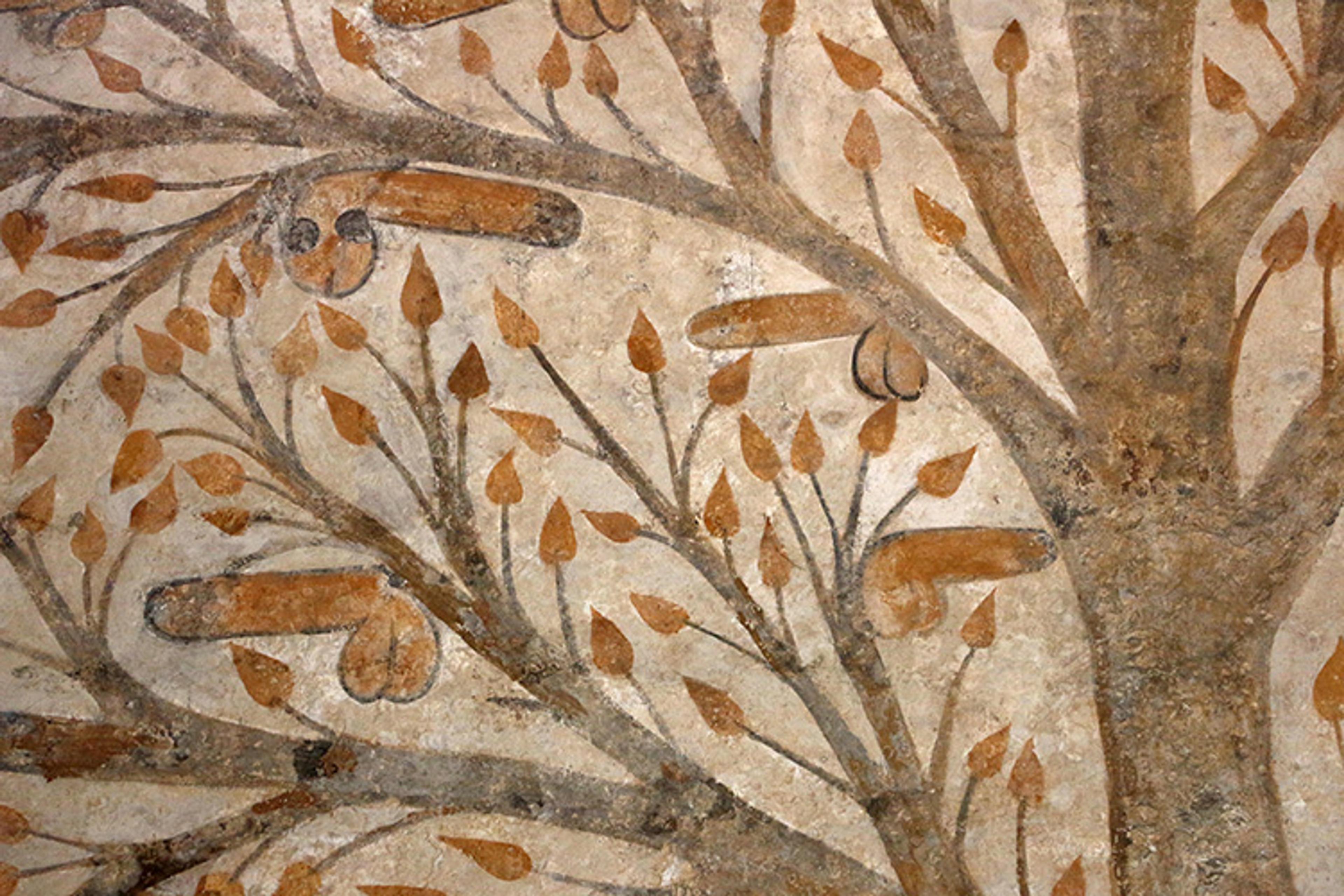
Detail from the fertility mural. Photo courtesy Wikipedia
There was even a cottage industry in the medieval period of art depicting penis trees, with women plucking them like so many apples. In one decorated manuscript, a nun is carefully placing a penis in a basket that can barely accommodate its size. A memorable segment of an Icelandic saga has the lady of the house insisting that everyone hold a dried horse penis at dinner and say something poetic over it, only to be schooled in the error of such pagan ways by none other than the Christian proselytiser and king Olaf II, who arrived on the scene in disguise.
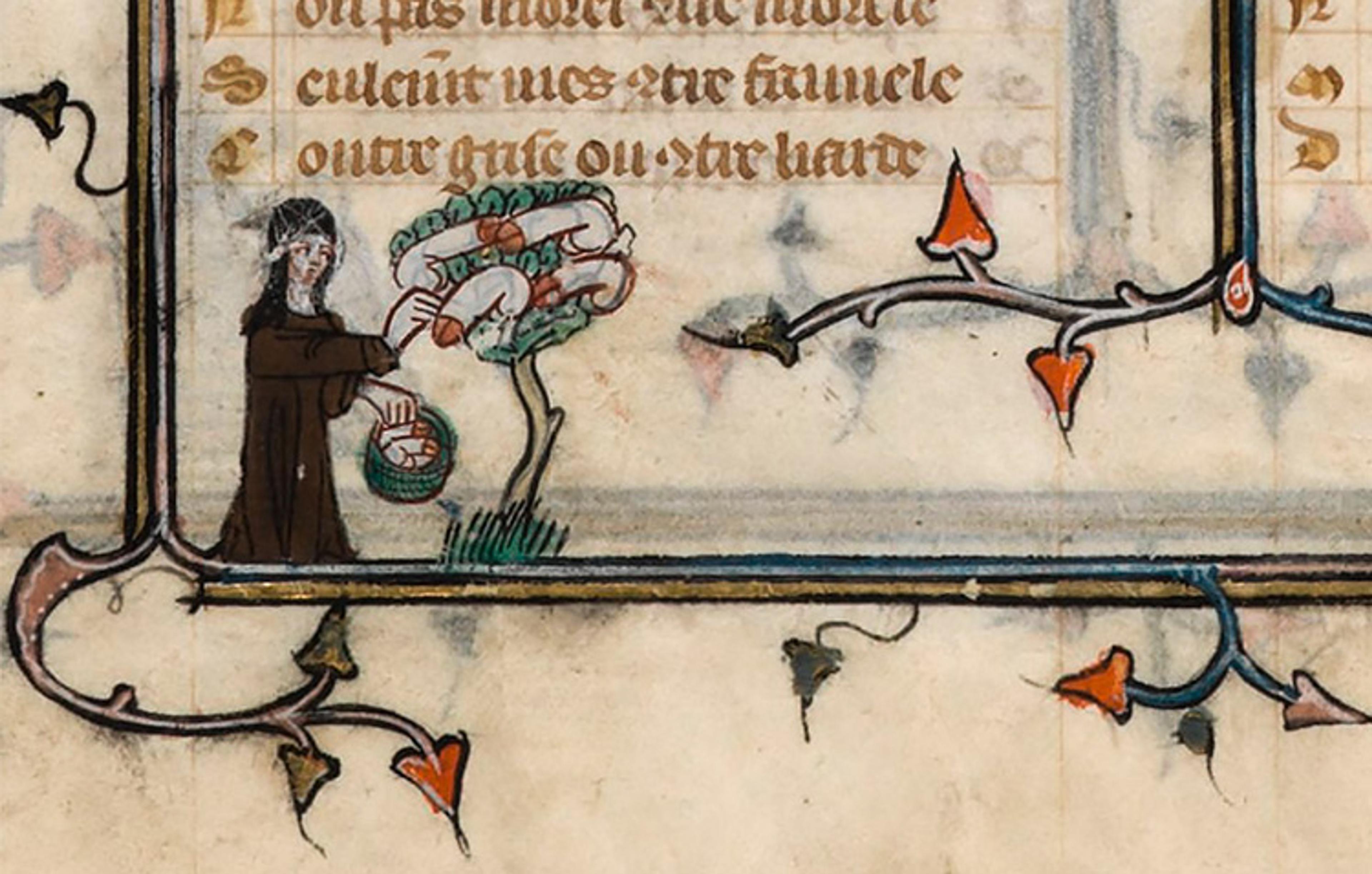
A nun at a phallus tree, from Le Roman de la Rose, BNF fr 25526. Courtesy Bibliothèque Nationale, Paris
As with the penis trees, in many cultures, the penis replaced the person. But the associations often shared common features. The penises or phalli were made from all kinds of media – wood, stone, clay, painting – in versions large and small, for protection, fertility and religious rites. They are present on hunters in cave drawings and at 5,000-year-old ancient sites in Japan.
In many regions today, the penis remains associated with safeguarding home and fertility, serving as the centre of festivals or the protector of family dwellings. Of course, it has also been used for less positive purposes, and has been seen in some cultures as an embodiment of masculinity or the measure of a man. That’s unfortunate for everyone because the pressures arising from using the penis as a unit of measure build to impose an impossible masculinity on men.
When this pressure cooks up a combination of self-entitlement and frustration at not having that entitlement met, the result can be explosive anger. And that anger can be taken out on the targets of that entitlement, intrusively through unwanted dick pics or directly through sexual assault or worse. Viewing the penis as the measure of a man harms all of us.
As a survey of the animal kingdom illustrates, the penis is not the measure of a male and not the embodiment of masculinity. It is, like the animal kingdom and like humans, a feature of much variety and many uses, beholden to no single crucible of form, fit or function, and often fascinating.
